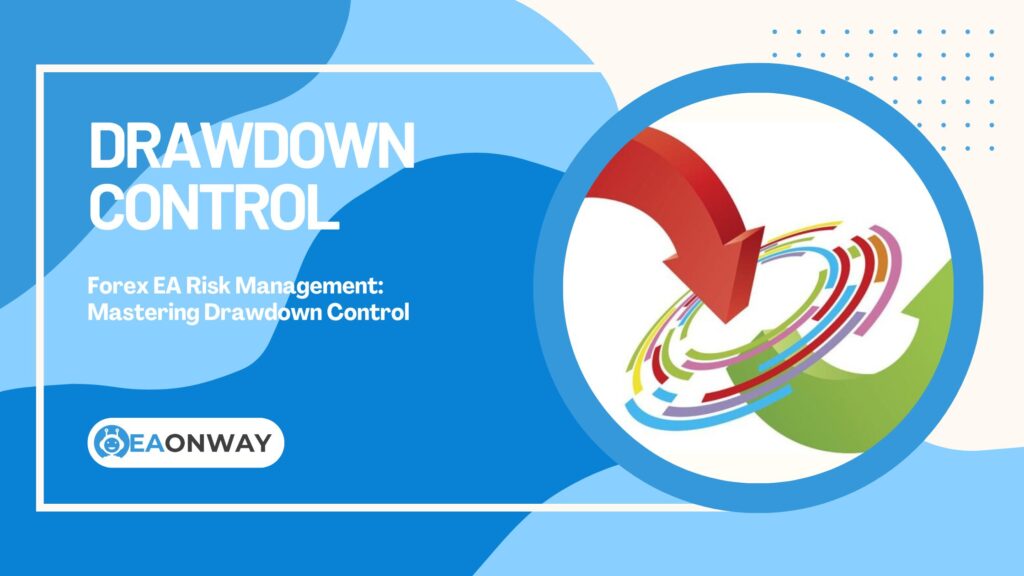Forex Position Sizing Calculator: A Guide to Models & Formulas
A reliable forex position sizing calculator is an invaluable asset for traders aiming to manage risk per trade effectively, but truly grasping the underlying principles, such as fixed fractional position sizing and the renowned 1 percent rule forex, is paramount for navigating the often-turbulent currency markets. Many traders, especially those new to Forex or exploring automated solutions like Expert Advisors (EAs), meticulously research entry signals and strategies, yet tragically overlook one of the most critical components of sustained trading: how much capital to allocate to each individual trade. This oversight is a primary contributor to blown accounts and dashed expectations. Why does this happen? Often, the excitement of potential profits overshadows the disciplined, mathematical approach required to protect trading capital.
This comprehensive guide delves deep into the art and science of Forex position sizing. We will dissect what it means, why it’s an indispensable pillar of risk management, and explore various key models from the simple fixed lot to the more adaptive volatility-based approaches. You’ll learn precisely how to calculate your ideal position size step-by-step, understand the formulas involved, and discover how tools like a forex position sizing calculator can streamline the process. Our goal is to equip you with the knowledge to make informed decisions, manage your Forex capital at risk more effectively, and ultimately, approach the market with a strategy that prioritizes capital preservation – a cornerstone of responsible trading.
Key Takeaways
Here’s a quick summary of the essential points to understand about Forex position sizing:
- Position Sizing Defines Risk: It’s the process of determining the correct number of currency units (lots) to trade based on your account size and pre-set risk tolerance, directly controlling your potential loss on any single trade.
- Capital Preservation is Key: Proper position sizing is fundamental to protecting your trading capital from catastrophic losses. It ensures no single trade can significantly cripple your account.
- The 1-2% Rule is a Guideline: A common practice is to risk only 1% to 2% of your account equity on any single trade (the 1 percent rule forex is a popular starting point).
- Key Calculation Inputs: Accurate position sizing requires knowing your account equity, desired risk percentage per trade, stop-loss distance in pips, and the pip value of the currency pair.
- Various Models Exist: Different models like fixed lot, fixed fractional position sizing (percentage risk), fixed ratio, and volatility-based sizing offer various approaches to suit different strategies and risk appetites.
- Calculators Help, Understanding is Crucial: A forex position sizing calculator automates calculations, but understanding the formula and principles allows for better decision-making and adaptation.
- Leverage vs. Position Size: Leverage allows you to control larger positions, but your position size (determined by risk rules) dictates your actual risk per trade, not the leverage itself.
- Consistency is Vital: Applying your chosen position sizing strategy consistently across all trades is essential for effective long-term risk management forex.
What is Forex Position Sizing? (And Why It’s Non-Negotiable)
Understanding position sizing is the first step towards taking control of your trading risk. It’s a concept that, once mastered, can significantly alter your trading journey from one of hopeful gambles to calculated engagements.
Defining Forex Position Sizing: More Than Just Trade Size
Forex position sizing is the methodical process of determining the appropriate quantity of currency units (expressed in lots) to buy or sell in a single trade, based on your current account equity and your predefined maximum acceptable risk for that trade. It’s not simply about choosing a random trade size; it’s a calculated decision designed to control potential losses and ensure the longevity of your trading capital. Think of it as deciding how many chips to bet on a single hand in poker, but with a much more scientific underpinning based on your total bankroll and loss limits. This process involves a trade size calculation forex traders must perform before entering any position.
Why is Accurate Position Sizing a Cornerstone of Risk Management?
Accurate position sizing is a cornerstone of risk management forex because it directly quantifies and caps your potential loss on any individual trade. Without it, traders are essentially flying blind, exposing their accounts to unpredictable and potentially devastating losses. By pre-determining the maximum percentage of your account equity risk you’re willing to lose if a trade goes against you (e.g., 1% or 2%), position sizing ensures that a string of losses – which are inevitable in trading – won’t wipe out your account. It transforms risk from an unknown variable into a managed constant.
How Does Position Sizing Directly Impact Your Trading Capital?
Position sizing directly impacts your trading capital by dictating the monetary value of each pip movement for your trade and, consequently, the total amount you stand to lose if your stop-loss is hit. For example, risking 1% of a $10,000 account means you’re willing to lose $100 on a trade. Your position size will be calculated such that if your stop-loss (say, 50 pips away) is triggered, your loss is limited to that $100. A larger position size would mean each pip is worth more, and you’d hit your $100 loss limit with a smaller adverse price move, or lose more if the stop-loss distance remained the same.
What Happens if You Ignore Proper Position Sizing?
Ignoring proper position sizing is one of the fastest routes to depleting your trading capital and exiting the market prematurely. If you trade sizes that are too large for your account (over-leveraging your risk, not necessarily your broker leverage), even a few consecutive losses can lead to a significant drawdown, making recovery incredibly difficult. This often triggers emotional trading decisions, like revenge trading, further compounding losses. Without a disciplined approach to Forex capital at risk through position sizing, traders often face margin calls and the grim reality of a blown account.
According to a 2019 study by the Financial Conduct Authority (FCA), approximately 82% of retail CFD traders (which includes Forex traders) lost money, with poor risk management, including inadequate position sizing, being identified as a key factor (Source: Financial Conduct Authority, “CFDs: Conduct of Business Rules”). Additionally, a comprehensive study from IG Group in 2022 found that consistently profitable traders were more than twice as likely to use proper position sizing techniques compared to unprofitable traders (Source: IG Group, “Trading Behaviors Study 2022”).
Core Components of Forex Position Sizing Calculation
To effectively calculate your position size, whether manually or using a forex position sizing calculator, you need to understand several key components. These elements are the building blocks of any sound Forex position sizing formula.
What is Account Equity and Why Does It Matter?
Account equity is the current total value of your trading account. It’s calculated as your account balance plus or minus the profit or loss from any open positions. Account equity, not just your initial deposit or balance, should be the basis for your risk calculations because it reflects the true, real-time value of your capital. Using equity ensures that as your account grows, your position sizes can proportionally increase (compounding), and if your account shrinks, your position sizes decrease, protecting remaining capital. This dynamic adjustment based on account equity risk is crucial.
How Do You Define Your Risk Per Trade Percentage (e.g., the 1 Percent Rule Forex)?
Your risk per trade percentage is the maximum portion of your account equity you are willing to lose on any single trade. This is a personal decision based on your risk tolerance and trading strategy. A widely advocated guideline, especially for newer traders, is the 1 percent rule forex, meaning you risk no more than 1% of your account equity per trade. Some more experienced traders might go up to 2% or slightly higher, but rarely above 3-5% for conservative strategies. For example, with a $5,000 account equity, a 1% risk means you’re willing to lose a maximum of $50 on your next trade. This risk per trade percentage is fundamental.
What is Stop-Loss Distance in Pips and Its Role?
The stop-loss distance is the number of pips between your trade entry price and your stop-loss order price. A stop-loss order is designed to automatically close your trade if the market moves against you by this predetermined amount, thereby limiting your loss. The stop-loss distance should be determined by your trading strategy and market analysis (e.g., based on volatility, support/resistance levels), not by how much you want to risk in monetary terms. Once you know your stop-loss distance in pips and your risk amount in currency, you can then calculate the appropriate position size. Stop loss distance position sizing is a critical synergy.
How Do You Determine Pip Value for a Specific Currency Pair?
The pip value is the monetary change in your account for each one-pip movement in the exchange rate of the currency pair you are trading. This value varies depending on the currency pair, your account currency, and the trade size (lot size). For pairs where the USD is the quote currency (e.g., EUR/USD, GBP/USD), for a standard lot (100,000 units), one pip is typically worth $10. For other pairs, like USD/JPY, the pip value calculation is different and also depends on the current exchange rate. A pip value calculator (often provided by brokers or available online) is essential for this step if you’re not trading a simple USD-quoted pair or a standard lot.
What is the Lot Size in Forex Trading?
Lot size in Forex trading refers to the number of currency units you are buying or selling. Standard lot sizes are:
- Standard Lot: 100,000 units of the base currency.
- Mini Lot: 10,000 units of the base currency.
- Micro Lot: 1,000 units of the base currency.
- Nano Lot: 100 units of the base currency (less common).
Your calculated position size will ultimately be expressed in terms of these lots (or fractions thereof, depending on your broker). The Forex lot size calculation is the final output of your position sizing efforts.
Key Forex Position Sizing Models Explained
Traders employ various models to determine their trade sizes. Each has its own logic, advantages, and disadvantages. Understanding these models helps you choose one that aligns with your trading style and risk management philosophy.
Fixed Lot Size Model: Simple but Inflexible?
The Fixed Lot Size model involves trading the same number of lots on every trade, regardless of your account balance or the specific trade setup (e.g., stop-loss distance).
- Explanation: You decide to always trade, for example, 0.1 lots (a mini lot) for every trade.
- Pros: Simplicity is its main advantage. It’s easy to implement and requires no ongoing calculations once the initial lot size is chosen.
- Cons: This model is highly inflexible. It doesn’t adapt to changes in account equity; as your account grows, your risk per trade (as a percentage) decreases, potentially slowing growth. Conversely, if your account shrinks, the fixed lot size represents an increasing percentage of your capital, accelerating losses. It also doesn’t account for varying stop-loss distances; a wider stop with a fixed lot size means more money at risk.
- When to use: Rarely recommended for serious, long-term trading due to its poor risk adaptation. It might be used by beginners for initial practice with very small fixed sizes or in specific automated strategies where risk is managed through other means (though this is less common for robust systems).
Fixed Fractional Position Sizing (Percentage Risk Model): The Industry Standard?
Fixed Fractional Position Sizing, often called the Percentage Risk Model, is arguably the most popular and widely recommended method for risk management forex. This model involves risking a fixed percentage of your account equity on each trade.
- Explanation: You decide to risk a specific percentage (e.g., 1%, 2%) of your current account equity on every trade. The actual lot size will then vary based on your stop-loss distance for that particular trade to ensure the monetary risk remains consistent with your chosen percentage. The 1 percent rule forex is a direct application of this model.
- Formula Core Idea:
Position Size = (Account Equity * Risk Percentage) / (Stop Loss in Pips * Pip Value per Lot) - Example:
- Account Equity: $10,000
- Risk Percentage: 1% (meaning $100 risk per trade)
- Currency Pair: EUR/USD (Pip Value for 1 standard lot = $10)
- Stop-Loss Distance: 50 pips
- Risk Amount per Standard Lot with 50 pip stop: 50 pips * $10/pip = $500
- Position Size: $100 (desired risk) / $500 (risk per lot) = 0.2 standard lots (or 2 mini lots).
- Pros:
- Dynamically adjusts trade size to account equity, promoting natural compounding during winning streaks and capital protection during losing streaks.
- Ensures a consistent percentage of capital is at risk, regardless of stop-loss width for a trade.
- Widely supported by forex position sizing calculator tools.
- Cons:
- Requires recalculation for every trade, based on current equity and stop-loss distance.
- During significant drawdowns, the decreasing position sizes can make recovery feel slow (though this is a protective feature).
- This is a cornerstone of disciplined Forex money management rules.
Fixed Ratio Position Sizing: Balancing Risk and Reward Growth?
Fixed Ratio position sizing aims to increase position size only after a certain amount of profit (“delta”) has been achieved. It tries to balance the aggressiveness of increasing trade size with capital protection.
- Explanation: Developed by Ryan Jones in “The Trading Game,” this method suggests increasing your contract size by one unit for each fixed increment of profit gained. For instance, you might decide to increase your lot size by 0.01 lots for every $500 in profit your account makes.
- Pros: Less aggressive in increasing position size compared to fixed fractional during initial account growth, potentially leading to smoother equity curves. It forces a trader to “earn” the right to trade larger.
- Cons: Can be more complex to implement and track than fixed fractional. Determining the optimal “delta” (profit increment) can be challenging. Position sizes may not decrease as rapidly during drawdowns compared to pure fixed fractional, unless specifically adapted.
- This method is less common than fixed fractional but offers an alternative for those seeking a more controlled scaling of trade size.
Volatility-Based Position Sizing (e.g., ATR-Based): Adapting to Market Conditions?
Volatility-based position sizing adjusts the trade size according to the current market volatility, typically measured by indicators like the Average True Range (ATR).
- Explanation: The core idea is to take smaller positions in highly volatile markets and larger positions in quieter markets, all while maintaining a consistent monetary risk per trade. If the ATR indicates higher volatility (wider expected price swings), your stop-loss might naturally be wider. To maintain your desired percentage risk (e.g., 1% of equity), your position size would need to be smaller. Conversely, lower volatility might allow for tighter stops and thus larger position sizes for the same risk percentage.
- Example (Conceptual with ATR):
- Determine your fixed monetary risk (e.g., 1% of equity = $100).
- Determine your stop-loss based on a multiple of ATR (e.g., 2 * ATR value in pips).
- Calculate position size:
$100 / (Stop-Loss in Pips * Pip Value per Lot).
- Pros: Adapts to changing market conditions, potentially improving risk-adjusted returns. It normalizes risk exposure across trades taken in different volatility environments. Volatility position sizing is a sophisticated approach.
- Cons: Relies on an accurate measure of volatility (ATR is common but has limitations). Can be more complex to calculate and implement, often benefiting from a good forex position sizing calculator that supports ATR inputs or by programming it into an EA.
- This method aligns well with strategies that use volatility-based stop-losses.
Kelly Criterion for Forex: Optimal Growth or Overly Aggressive?
The Kelly Criterion is a mathematical formula used to determine the optimal size of a series of bets to maximize long-term capital growth. While originating in gambling, it has been adapted for investing and trading.
- Explanation: The formula suggests betting a specific fraction of your capital based on your probability of winning (win rate) and your win/loss ratio (average win size / average loss size). The basic formula is:
Kelly % = W – [(1 – W) / R], where W is the probability of winning, and R is the win/loss ratio. - Cautions:
- Extreme Aggressiveness: The full Kelly Criterion often suggests position sizes that are far too aggressive for most traders, leading to very high volatility in account equity and substantial drawdowns. Many practitioners use a “fractional Kelly” (e.g., 10% or 25% of the calculated Kelly percentage) to temper this.
- Requires Accurate Inputs: The formula is highly sensitive to the accuracy of your win rate (W) and win/loss ratio (R). Estimating these precisely from historical data can be challenging, and past performance is not indicative of future results. Small errors in these inputs can lead to vastly different (and potentially dangerous) position sizes.
- Suitability: Generally considered too risky for most retail Forex traders, especially when using the full Kelly. Its principles of linking bet size to edge are sound, but practical application requires extreme caution and significant modification (like fractional Kelly). The concept of Optimal F forex is related but often refers to more empirically derived optimal fixed fractions rather than pure Kelly.
- It’s crucial to understand that theoretical “optimal growth” can come with gut-wrenching volatility. The Bank for International Settlements (BIS) has published numerous papers on financial models and risk management in trading, highlighting how even mathematically sound models can create significant risks if applied without proper context or risk controls (Source: BIS Papers).
How to Calculate Forex Position Size: A Step-by-Step Guide
Knowing the theory is one thing; applying it is another. Here’s a practical, step-by-step guide to calculating your Forex position size, primarily using the widely accepted Fixed Fractional (Percentage Risk) model. This will help you learn forex position sizing fundamentals and how to calculate forex position size manually before relying solely on a calculator.
Step 1: Determine Your Account Equity
First, ascertain your current account equity. This is your trading account balance plus or minus any unrealized profits or losses on open positions.
- Example: Your account balance is $10,500, and you have an open trade with an unrealized profit of $150. Your account equity is $10,500 + $150 = $10,650.
Step 2: Choose Your Risk Percentage Per Trade (e.g., 1%, 2%)
Decide on the maximum percentage of your account equity you are willing to risk on this single trade. For beginners, 1% is highly recommended.
- Example: You choose to risk 1% of your account equity. This is your risk per trade percentage.
Step 3: Calculate Your Risk Amount in Account Currency
Multiply your account equity by your chosen risk percentage to find the maximum amount of money you are willing to lose on this trade.
- Formula:
Risk Amount = Account Equity * Risk Percentage - Example: $10,650 (Account Equity) * 0.01 (1% Risk) = $106.50. This is your maximum allowable loss for this trade.
Step 4: Determine Your Stop-Loss Distance in Pips
Based on your trading strategy and market analysis (e.g., support/resistance, volatility, chart patterns), determine where your stop-loss order will be placed if the trade moves against you. Measure this distance in pips from your entry price.
- Example: For an EUR/USD trade, you decide your stop-loss will be 50 pips away from your entry price.
Step 5: Find the Pip Value for Your Chosen Pair and Trade Size (e.g., per standard lot)
Determine the value of one pip for the currency pair you are trading, in your account currency, for a standard lot (100,000 units).
- For pairs where USD is the quote currency (e.g., EUR/USD, GBP/USD, AUD/USD) and your account is in USD:
- Pip value for 1 standard lot (100,000 units) = $10
- Pip value for 1 mini lot (10,000 units) = $1
- Pip value for 1 micro lot (1,000 units) = $0.10
- For other pairs (e.g., USD/JPY, EUR/JPY, or if your account currency is different): You’ll need to calculate this or use a pip value calculator. For USD/JPY, if 1 USD = 150.00 JPY, then 1 pip (0.01 JPY) for a standard lot is
(0.01 JPY / 150.00 JPY per USD) * 100,000 units = approx $6.67. - Example: For EUR/USD, with a USD account, the pip value per standard lot is $10.
Step 6: Calculate the Position Size in Lots (Using a Forex Position Sizing Formula)
Now, use the information gathered to calculate your position size in lots.
- Forex Position Sizing Formula:
Position Size in Lots = Risk Amount / (Stop-Loss in Pips * Pip Value per Standard Lot) - Example (Continuing from above):
- Risk Amount = $106.50
- Stop-Loss in Pips = 50 pips
- Pip Value per Standard Lot (for EUR/USD) = $10
- Position Size = $106.50 / (50 pips * $10/pip/lot)
- Position Size = $106.50 / $500 per lot
- Position Size = 0.213 standard lots
Since most platforms allow trading in mini lots (0.10) or micro lots (0.01), you would round this appropriately (e.g., to 0.21 standard lots, or 2 mini lots and 1 micro lot, or 21 micro lots, depending on your broker’s precision). Always round down if unsure to stay within your risk limit.
Step 7: Practical Example: Calculating Position Size for USD/CAD
Let’s do another one for a pair where the account currency (USD) is the base currency.
- Account Equity: $5,000 USD
- Risk Percentage: 2%
- Risk Amount: $5,000 * 0.02 = $100 USD
- Currency Pair: USD/CAD
- Proposed Stop-Loss: 75 pips
- Account Currency: USD
- To find pip value for USD/CAD per standard lot (in USD):
- Pip value in CAD = 10 CAD (for a standard lot, as CAD is the quote currency, 0.0001 * 100,000)
- Current USD/CAD exchange rate (example): 1.3500 (meaning 1 USD = 1.3500 CAD)
- Pip value in USD = 10 CAD / 1.3500 CAD per USD = approximately $7.41 USD per standard lot.
- Position Size Calculation:
Position Size = $100 / (75 pips * $7.41/pip/lot)Position Size = $100 / $555.75 per lotPosition Size = 0.1799 standard lots- You might trade 0.18 standard lots, or 1 mini lot and 8 micro lots (0.10 + 0.08 = 0.18).
This position sizing calculation guide forex demonstrates the importance of knowing pip values accurately.
Using a Forex Position Sizing Calculator: Benefits and Considerations
While manual calculation is enlightening, a dedicated forex position sizing calculator can save time and reduce errors, especially when dealing with various currency pairs and dynamic inputs. These tools are essential to manage risk per trade efficiently.
What is a Forex Position Sizing Calculator?
A Forex position sizing calculator is a software tool (online, downloadable, or integrated into platforms like MetaTrader) that automates the calculation of the appropriate trade size (in lots) based on user-defined inputs. These inputs typically include account currency, account equity, desired risk percentage, stop-loss in pips, and the currency pair being traded. It performs the trade size calculation forex traders need quickly.
How Can a Forex Position Sizing Calculator Help You Manage Risk Per Trade?
A forex position sizing calculator helps you manage risk per trade by:
- Accuracy: Reducing the chance of manual calculation errors.
- Speed: Providing instant calculations, crucial in fast-moving markets.
- Consistency: Ensuring you apply your risk rules consistently for every trade.
- Convenience: Handling complex pip value calculations for cross pairs or different account currencies automatically.
Many traders find a reliable forex risk calculator online to be an indispensable part of their trading toolkit.
What Inputs Do Forex Position Sizing Calculators Typically Require?
Most Forex position sizing calculators require the following inputs:
- Account Currency: The currency your trading account is denominated in (e.g., USD, EUR, GBP).
- Account Balance/Equity: Your current trading capital.
- Risk Percentage (or Risk Amount): The percentage of your equity (e.g., 1%, 2%) or the fixed monetary amount you’re willing to risk.
- Stop-Loss (in Pips): The distance from your entry price to your stop-loss order.
- Currency Pair: The pair you intend to trade (e.g., EUR/USD, GBP/JPY).
Some advanced calculators might also ask for current market prices to fetch precise pip values or allow inputs for ATR-based sizing.
Are Online Forex Risk Calculators Reliable?
Reputable online Forex risk calculators provided by well-known Forex education sites, brokers (for their clients), or financial tool providers are generally reliable, provided you input the data correctly. However, it’s wise to:
- Understand the Formula: Know the underlying calculation they are performing (as outlined in this guide).
- Cross-Check: Occasionally, especially when starting, cross-check the calculator’s output with your own manual calculation for a simple pair to ensure it aligns with your understanding.
- Source: Use calculators from trusted sources. Be wary of obscure tools that don’t explain their methodology.
The reliability often comes down to the accuracy of the real-time exchange rates they use for pip value conversions if you are trading many different pairs.
Advanced Considerations and Common Pitfalls in Position Sizing
Mastering position sizing goes beyond basic calculations. Several nuanced factors and common mistakes can impact its effectiveness. Understanding these will help you refine your approach.
How Does Leverage Interact with Position Sizing? (It doesn’t determine risk per trade)
This is a critical and often misunderstood point. Leverage allows you to control a larger position than your account capital would normally permit. However, your position size, calculated based on your risk percentage and stop-loss, determines your actual monetary risk per trade, not the leverage offered by your broker.
- Example: You have $1,000 equity and risk 1% ($10) with a 50-pip stop on EUR/USD (pip value $10/lot). Your position size would be
$10 / (50 * $10/lot) = 0.02 lots(2 micro lots).- With 30:1 leverage, you could control up to
$1,000 * 30 = $30,000(0.3 lots). - With 500:1 leverage, you could control up to
$1,000 * 500 = $500,000(5 lots). - However, your actual trade size based on risk management is 0.02 lots. This trade only requires about
$2,000 * (1/leverage_ratio)in margin.
High leverage simply means you tie up less of your capital as margin for a given sensibly-sized trade. The danger comes when traders use high leverage to take on excessively large position sizes relative to their risk rules, thereby amplifying risk. Leverage and position sizing are related in terms of margin usage, but position sizing based on risk percentage dictates actual risk.
- With 30:1 leverage, you could control up to
The Dangers of “Over-Sizing” and “Under-Sizing” Positions
- Over-Sizing: Trading a position size that is too large for your account equity and risk parameters. This is a cardinal sin. Even a short string of losses can lead to catastrophic drawdowns, margin calls, and account depletion. It often stems from greed or a desire to recover losses quickly.
- Under-Sizing: Trading a position size that is too small relative to your risk parameters and account equity. While safer, consistently under-sizing can hinder account growth significantly. If your strategy has a positive expectancy, under-sizing means you’re not capitalizing on it effectively. It can also lead to complacency or taking on too many (small) trades.
Finding the right balance based on a consistent, well-thought-out model is key.
Adjusting Position Size for Different Currency Pairs and Volatility
Not all currency pairs behave the same. Exotic pairs or even majors during high-impact news can exhibit significantly different volatility.
- Currency Pairs: Pip values vary. A 50-pip stop on EUR/USD has a different monetary risk than a 50-pip stop on GBP/JPY for the same lot size. Your calculation (or calculator) must account for this.
- Volatility: As discussed with volatility position sizing (e.g., ATR-based), you might consider adjusting position sizes based on prevailing market conditions. In highly volatile markets, you might use smaller sizes (as stops might be wider) to maintain your fixed percentage risk. Conversely, in very low volatility, if your strategy allows for tighter stops, your position size might increase for the same risk percentage.
Forgetting to Re-calculate: A Common Mistake
Your account equity is dynamic; it changes with every closed trade (and with unrealized P/L of open trades if you base it on equity). A common mistake is to calculate position size once and then keep using that same lot size for subsequent trades, even after several wins or losses.
- With Fixed Fractional Sizing: You must recalculate your risk amount (e.g., 1% of current equity) and then your position size before every new trade to ensure it accurately reflects your current capital and maintains the desired risk percentage.
Position Sizing with Forex EAs: What to Look For?
If you’re using a Forex Expert Advisor (EA), its money management capabilities are crucial.
- Built-in Position Sizing: Check if the EA has robust, flexible position sizing options. Does it allow for fixed fractional (percentage risk) sizing based on account equity? Can you set your desired risk percentage?
- Inputs: Does it correctly use stop-loss levels to calculate size, or does it use a fixed lot? The former is generally preferable for risk control.
- Avoid Martingale/Grid EAs without understanding: Many EAs employ high-risk strategies like Martingale (doubling down on losses) or grid trading, which inherently have dangerous position sizing logic that can lead to rapid account blowouts. Understand these mechanisms thoroughly. The Financial Conduct Authority (FCA) in the UK has warned about high-risk speculative investments, and EAs with aggressive sizing fall into this concern if not properly understood (Source: FCA – Invest smart: How to invest safely).
- Customization: Can you control the maximum lot size, or adjust sizing parameters to fit your risk tolerance, rather than relying on default EA settings which might be too aggressive?
The goal is for the EA to automate your entire strategy, including sound Forex money management rules.
Mastering Position Sizing: Your Key to Sustainable Forex Trading
We’ve journeyed through the critical landscape of Forex position sizing, from defining its fundamental importance to dissecting various models like fixed fractional position sizing and understanding the mechanics of how to calculate forex position size. The consistent message is clear: effective position sizing, often facilitated by a forex position sizing calculator but always governed by prudent rules like the 1 percent rule forex, is not just a technique but a survival discipline. It’s the mechanism by which you actively manage risk per trade and shield your Forex capital at risk.
Ignoring these principles in pursuit of rapid gains is a common pitfall, often leading to the disappointment that this pillar page, “Understanding the Core Risks of Forex Trading,” aims to prevent. Whether you trade manually or employ Forex EAs, the responsibility for setting appropriate risk parameters through diligent position sizing ultimately rests with you. By embracing a systematic approach to determining your trade size, you shift the odds more in favor of long-term participation in the markets, focusing on capital preservation as the bedrock upon which any potential profitability can be built. Remember, consistent application of sound position sizing rules is more critical to your trading longevity than finding the “perfect” entry signal.
Important Risk Warning
The information provided in this article is for educational purposes only and does not constitute financial or investment advice. Forex trading involves a substantial risk of loss and is not suitable for all investors. The high degree of leverage available in Forex trading can work against you as well as for you. Before deciding to trade Forex, you should carefully consider your investment objectives, level of experience, and risk appetite. There is a possibility that you could sustain a loss of some or all of your initial investment and therefore you should not invest money that you cannot afford to lose. You should be aware of all the risks associated with Forex trading and seek advice from an independent financial advisor if you have any doubts. Past performance is not indicative of future results. EaOnWay.com does not provide investment advice or recommendations.






